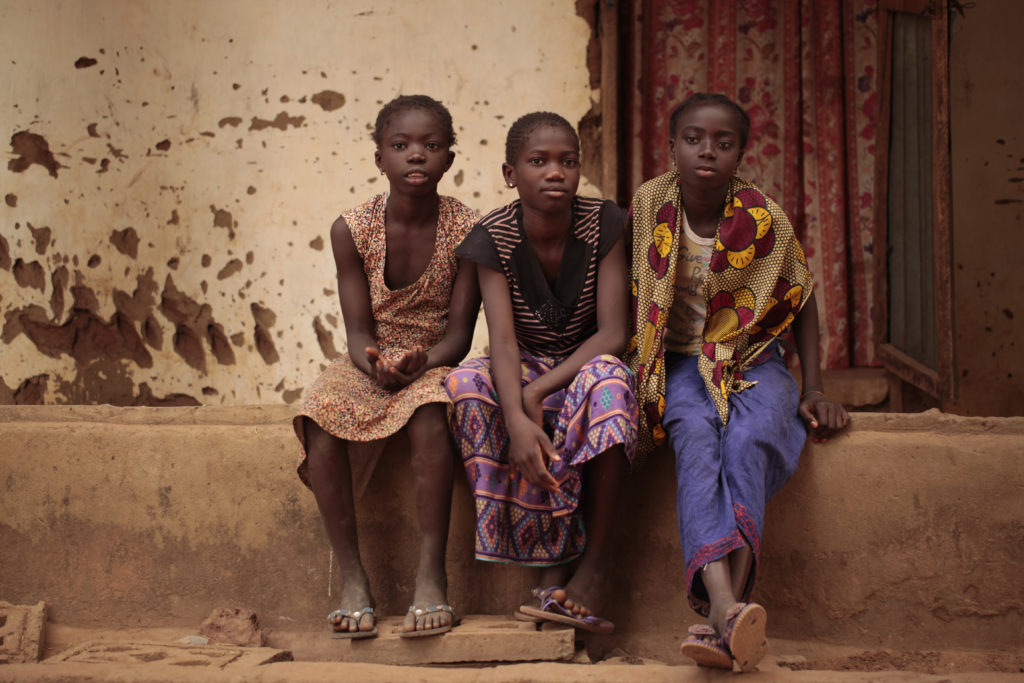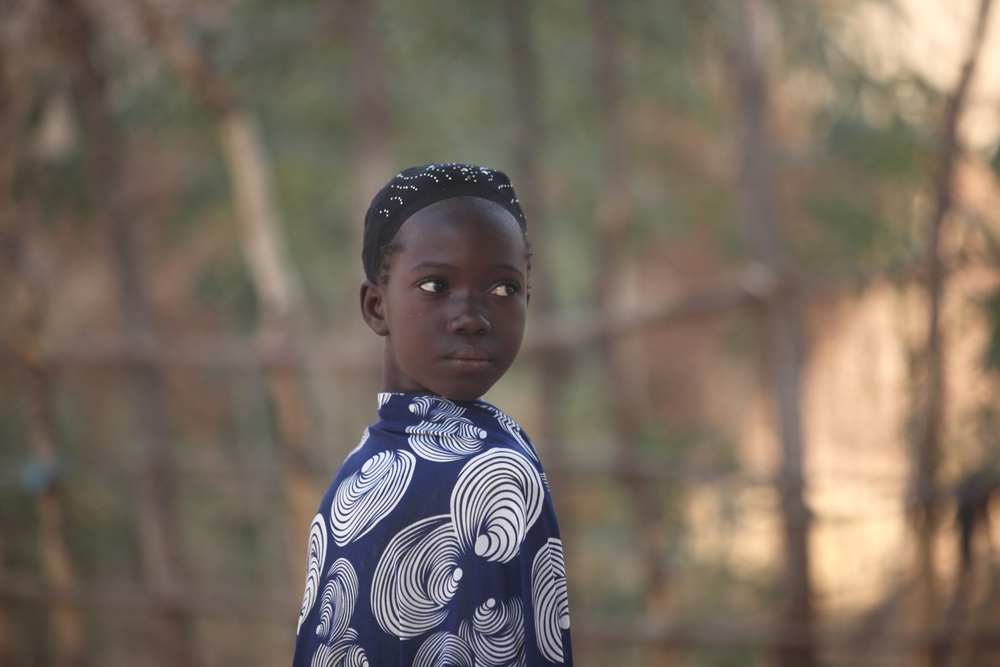FGM is a form of violence against girls and women and a form of child abuse which affects an estimated 200 million girls and women today. FGM is currently documented in 92 countries around the world and no continent is left out from this harmful practice. Culture, lack of awareness and education and false myths about the hygienic advantages or health benefits are the drivers for FGM to continue being performed.

Defining FGM
Female genital mutilation (FGM) comprises all procedures that involve partial or total removal of the external female genitalia, or other injury to the female genital organs for non-medical reasons (WHO, 2023). It’s also known as female circumcision or cutting, and by other terms, such as sunna, gudniin, halalays, tahur, megrez and khitan, among others (National FGM Centre, 2018). FGM is usually performed using a sharp object such as a knife, a razor blade, or broken glass (End FGM, 2023). The practice has no health benefits for girls and women and causes severe physical, psychological, and social negative setbacks.
According to the World Health Organization (WHO), female genital mutilation can be classified into four major types (WHO, 2023):
Type 1 – Clitoridectomy
This is the partial or total removal of the clitoral glans (the external and visible part of the clitoris, which is a sensitive part of the female genitals), and/or the prepuce/clitoral hood (the fold of skin surrounding the clitoral glans).
Type 2 – Excision
This is the partial or total removal of the clitoral glans and the labia minora, with or without removal of the labia majora (the outer folds of skin of the vulva).
Type 3 – Infibulation
This is the narrowing of the vaginal opening through the creation of a covering seal. The seal is formed by cutting and repositioning the labia minora, or labia majora, sometimes through stitching, with or without removal of the clitoral prepuce/clitoral hood and glans.
Type 4 – Other
This includes all other harmful procedures to the female genitalia for non-medical purposes, e.g., pricking, piercing, incising, scraping and cauterizing the genital area.
Types 1 and 2 are the most common overall, but there are variations depending on the country. Type 3 is experienced by about 10 percent of all affected women and is most likely to occur in Somalia, northern Sudan and Djibouti (UNFPA, 2022).
At what age is FGM performed?
The age at which FGM is carried out also varies from country to country (Awolola, O. O., & Ilupeju, N. A., 2019). However, it is mostly carried out on young girls between infancy and adolescence, and occasionally on adult women (WHO, 2023). In some areas, FGM is carried out during infancy – as early as a couple of days after birth. In others, it takes place during childhood, at the time of marriage, during a woman’s first pregnancy or after the birth of her first child. Recent reports suggest that the age has been dropping in some areas, with most FGM carried out on girls between the ages of 0 and 15 (UNFPA, 2022).
Where is FGM practiced?
FGM is currently documented in 92 countries around the world through nationally representative data, indirect estimates (usually in countries where FGM is mainly practised by diaspora communities), small-scale studies, or anecdotal evidence and media reports. Its prevalence varies from one geopolitical zone to the other with some authors quoting the prevalence of 2.9 percent in the South-East, 20.7 percent in the North-West, 9.9 percent in the Northcentral, 25.8 percent in the South-South, 49.0 percent in the Southeast, and 47.5 percent in the South-West (Awolola, O. O., & Ilupeju, N. A., 2019).
In Africa, FGM is known to be practised among certain communities in 33 countries: Benin, Burkina Faso, Cameroon, Central African Republic, Chad, Cote d’Ivoire, Democratic Republic of Congo, Djibouti, Egypt, Eritrea, Ethiopia, Gambia, Ghana, Guinea, Guinea-Bissau, Kenya, Liberia, Malawi, Mali, Mauritania, Niger, Nigeria, Senegal, Sierra Leone, Somalia, South Africa, South Sudan, Sudan, Tanzania, Togo, Uganda, Zambia and Zimbabwe (UNFPA, 2022).
Certain ethnic groups in Asian countries practice FGM, including communities in India, Indonesia, Malaysia, the Maldives, Pakistan and Sri Lanka (UNFPA, 2022). In the Middle East, the practice occurs in Oman, the United Arab Emirates and Yemen, as well as in Iraq, Iran, Jordan and the State of Palestine (UNFPA, 2022).
In Europe, it is estimated that about 600,000 women have been subjected to FGM and a further 180,000 girls are at high risk in 13 European countries alone (European Parliament News, 2020). In Eastern Europe, recent info shows that certain communities are practising FGM in Georgia and the Russian Federation (UNFPA, 2022).
In South America, certain communities are known to practice FGM in Colombia, Ecuador, Panama and Peru (UNFPA, 2022). In many Western countries, including Australia, Canada, New Zealand, the United States, the United Kingdom and various European countries, FGM is practised among diaspora populations from areas where the practice is common (UNFPA, 2022).
Who performs FGM?
FGM is most often carried out by elderly people in the community (usually, but not exclusively, women) designated to perform this task (circumcisers) or by traditional birth attendants. Among certain populations, FGM may be carried out by traditional health practitioners, barbers, members of secret societies, herbalists or sometimes a female relative (UNFPA, 2022).
In some cases, medical professionals perform FGM. This is referred to as the “medicalization” of FGM. According to recent UNFPA estimates, around one in four girls and women between the ages of 15 and 49 who have undergone FGM (or 52 million) were cut by health personnel. In some countries, this can reach as high as three in four girls.
This proportion is twice as high among adolescents (34 percent among those between the ages of 15 and 19) compared to older women (16 percent among those between the ages of 45 and 49). According to estimates from demographic and health surveys and multiple indicator cluster surveys, countries where the majority of FGM cases are performed by health workers are Egypt (38 percent), Sudan (67 percent), Kenya (15 percent), Nigeria (13 percent) and Guinea (15 percent) (UNFPA, 2022).
How many girls and women are affected?

An estimated 200 million girls and women today are believed to have been subjected to FGM (UNFPA, 2022). UNFPA estimates that over 4 million girls are at risk of FGM every year. In 2021, an additional 2 million cases of FGM were predicted to occur over the next decade, as a result of COVID-19-related school closures and disruptions to programmes that help protect girls from the practice (UNICEF, 2023). Aside from protecting girls who are currently at risk is the additional challenge of ensuring that those born in the future are free from the dangers of the practice.
This is especially important considering that FGM-concentrated countries are generally experiencing high population growth and have large youth populations (UNFPA, 2022). If FGM practices continue at recent levels, 68 million girls will be cut by 2030 (End FGM, 2023).
The causes that lead to FGM
Female genital mutilation is the result of deeply entrenched gender inequality. Where it is widely practised, FGM is supported by both men and women, usually without question, and anyone who does not follow the norm may face condemnation, harassment and ostracism (UNFPA, 2022). In fact, FGM is often considered a social norm, so the pressure to conform and the need to be accepted socially coupled with the fear of being rejected by the community, are strong motivations to perpetuate the practice (WHO, 2023).
The reasons given for practising FGM generally fall into five categories:
Psychosexual reasons
FGM is carried out as a way to control women’s sexuality, which is falsely believed to be insatiable if parts of the genitalia, especially the clitoris, are not removed. It is thought to ensure virginity before marriage and fidelity afterward as well as to increase male sexual pleasure (UNFPA, 2022). In some cultures, FGM is considered a prerequisite for marriage (BBC, 2019).
Sociological and cultural reasons
FGM is seen as a rite of passage into adulthood and as an intrinsic part of a community’s cultural heritage. Sometimes myths about female genitalia (e.g., that an uncut clitoris will grow to the size of a penis, or that FGM will enhance fertility or promote child survival) perpetuate the practice (UNFPA, 2022).
Hygiene and aesthetic reasons
Although there are no hygienic advantages or health benefits to FGM, practising communities believe that the external female genitalia are dirty and ugly and therefore they have to be removed to maintain hygiene and aesthetic appeal (UNFPA, 2022). In these communities, women who have not undergone FGM are regarded as unhealthy, unclean or unworthy (BBC, 2019).
Religious reasons
While FGM is not endorsed by Islam or Christianity, religious texts are commonly deployed to justify it (UNICEF, 2023). Although FGM is often perceived as being connected to Islam, perhaps because it is practised among many Muslim groups, not all Islamic groups practice FGM, and many non-Islamic groups do, including some Christians, Ethiopian Jews, and followers of certain traditional African religions. FGM is thus a cultural rather than a religious practice. Religious leaders take varying positions about FGM, with some contributing to its abolition (WHO, 2023).
Socio-economic factors
In many communities, FGM is a prerequisite for marriage. This makes it difficult for parents to abandon the practice. Families who don’t participate face ostracism and their daughters are at risk of becoming ineligible for marriage (UNICEF, 2023). Where women are largely dependent on men, economic necessity can be a major driver of the procedure. FGM sometimes is a prerequisite for the right to inherit as it may also be a major income source for practitioners (UNFPA, 2022).
FGM as a violation of girls’ and women’s rights

FGM is a form of violence against women and a form of child abuse (End FGM, 2023). It is a violation of universal human rights principles and children’s rights. FGM violates the principles of equality and non-discrimination on the basis of sex. It also violates the right to freedom from torture and cruel, inhuman or degrading treatment. Finally, it violates the right to the highest attainable standard of health, the right to physical integrity and, in the worst cases, it even violates the right to life (UNICEF, 2023).
Moreover, the negative effects of FGM on children’s development contravene the best interest of the child, the core of the Convention (Article 3). FGM also impacts the right to dignity and directly conflicts with the right to physical integrity, as it involves the mutilation of healthy body parts (End FGM, 2023).
Because it is performed without the consent of the girls, it also breaches the right to express freely one’s views (Article 12). Even if the girl child is aware of the practice, the issue of consent remains, as girls are usually too young to be consulted and have no voice in the decisions made on their behalf by members of their family. On the other hand, adolescent girls and women very often agree to undergo FGM because they fear the non-acceptance of their communities, families and peers (End FGM, 2023).
In General Comment No. 4, the Committee on the Convention on the Rights of the Child has said that States party to the Convention have an obligation “to protect adolescents from all harmful traditional practices, such as early marriages, honour killings and female genital mutilation” (CRC General Comment No. 4, 2003).
The consequences of FGM
FGM has no health benefits, and it deeply harms girls and women in numerous ways. It involves removing and damaging healthy and normal female genital tissue, and it interferes with the natural functions of girls’ and women’s bodies (WHO, 2023). The effects of FGM depend on several factors, including the type performed, the expertise of the practitioner, the hygiene conditions under which it is performed, the amount of resistance and the general health condition of the girl/woman undergoing the procedure (UNFPA, 2022).
Immediate consequences of FGM include severe pain and bleeding, shock, difficulty in passing urine, infections, increased risk of HIV transmission, injury to nearby genital tissue and sometimes death. Risk and complications increase with the type of FGM and are more severe and prevalent with infibulations (End FGM, 2023).
In addition to the severe pain during and in the weeks following the cutting, women who have undergone FGM experience various long-term effects: physical, sexual and psychological. They may experience chronic pain, chronic pelvic infections, development of cysts, abscesses and genital ulcers, excessive scar tissue formation, infection of the reproductive system, decreased sexual enjoyment and psychological consequences, such as post-traumatic stress disorder (End FGM, 2023).
Often, infibulated women are cut open on the first night of marriage (by the husband or a circumciser) to enable the husband to be intimate with his wife. At childbirth, many women also have to be cut again because the vaginal opening is too small to allow for the passage of a baby (UNFPA, 2022). After childbirth, women from some ethnic communities are often sown up again to make them “tight” for their husbands (re-infibulation). Such cutting and restitching of a woman’s genitalia results in painful scar tissue (End FGM, 2023).
Best guidelines to prevent and fight against FGM
According to the 2021 edition of the World Bank’s “Compendium of International and National Legal Frameworks on Female Genital Mutilation”, 84 countries in the world have domestic legislation that either specifically prohibits FGM or allows FGM to be prosecuted through other laws, such as the criminal or penal code, child protections laws, violence against women laws or domestic violence laws (World Bank, 2021). However, as stated previously, FGM is still in practice in many countries in the world.
Eliminating FGM requires coordinated efforts that engage whole communities – young people, parents, religious leaders, civil society organizations, activists, medical personnel, educators and policymakers. One of the most effective ways to end FGM is through collective abandonment, in which an entire community chooses to forgo the practice. This ensures that no single family or girl will be disadvantaged for not participating in FGM (UNICEF, 2023).
To do so, it is important to raise awareness of the harms and consequences caused by FGM by implementing community-led education and dialogue sessions on human rights and health (Awolola, O. O., & Ilupeju, N. A., 2019). As stated already, FGM has no link with hygienic advantages or health benefits, and it is more of a cultural than a religious practice.

Hence, it is important to promote awareness and dialogue about the false myths connected with FGM. To do so, community leaders, circumcisers, religious leaders, and opinion leaders should be encouraged to openly declare the abandonment of FGM in their communities and religious centres (Awolola, O. O., & Ilupeju, N. A., 2019).
Moreover, the media are key to raising awareness of the effects of FGM and to help guide the public’s view of FGM-affected communities. In fact, media coverage of FGM and related issues can influence public opinion, which can play a critical role in prevention through accurate and thoughtful information as well as play an educational role (End FGM, 2016).
In this sense, in 2012, the United Nations General Assembly designated 6 February as the International Day of Zero Tolerance for Female Genital Mutilation, to amplify and direct the efforts on the elimination of this practice (UNFPA, 2021). This date recalls everyone’s effort to eradicate FGM by 2023 as part of target 5.3 of Sustainable Development Goal 5 (SDG5) (UN, 2021).
Written by Arianna Braga
Internally proofread by Aditi Partha
Last updated on 2 September 2023
References:
Awolola, O. O., & Ilupeju, N. A. (2019). Female genital mutilation: culture, religion, and medicalization, where do we direct our searchlights for it eradication: Nigeria as a case study. Tzu-Chi Medical Journal, 31(1), 1-4. Retrieved from Tzu-Chi Medical Journal at https://doi.org/10.4103/tcmj.tcmj_127_18, accessed on 1 September 2023.
BBC (2019). What is FGM, where does it happen and why? Retrieved from BBC at https://www.bbc.com/news/world-47131052, accessed on 1 September 2023.
CRC General Comment No. 4 (2003). Adolescent health and development in the context of the Convention of the Rights of the Child, para. 39g. Retrieved from Girl’s Rights Platform at https://www.girlsrightsplatform.org/en/entity/q6nmjwl9t1, accessed on 2 September 2023.
End FGM (2016). How to talk about FGM. Retrieved from End FGM at https://www.endfgm.eu/editor/files/2017/05/How_to_Talk_about_FGM_FINAL__position_paper_v4_2.pdf, accessed on 2 September 2023.
End FGM (2023). What is FGM? Retrieved from End FGM at https://www.endfgm.eu/female-genital-mutilation/what-is-fgm/, accessed on 31 August 2023.
European Parliament News (2020). Female genital mutilation: where, why and consequences. Retrieved from European Parliament News at https://www.europarl.europa.eu/news/en/headlines/society/20200206STO72031/female-genital-mutilation-where-why-and-consequences, accessed on 1 September 2023.
National FGM Centre (2018). Traditional Terms for Female Genital Mutilation. Retrieved from National FGM Centre at https://nationalfgmcentre.org.uk/wp-content/uploads/2018/02/FGM-Terminology-for-Website.pdf, accessed on 1 September 2023.
NHS (2023). Female genital mutilation (FGM). Retrieved from NHS at https://www.nhs.uk/conditions/female-genital-mutilation-fgm/, accessed on 1 September 2023.
UN (2021). International Day of Zero Tolerance for Female Genital Mutilation, 6 February. Retrieved from UN.ORG at https://www.un.org/en/observances/female-genital-mutilation-day, accessed on 2 September 2023.
UNFPA (2021). The International Day of Zero Tolerance for Female Genital Mutilation 2021. Retrieved from UNFPA at https://www.unfpa.org/international-day-zero-tolerance-female-genital-mutilation-2021, accessed 2 September 2023.
UNFPA (2022). Female genital mutilation (FGM) frequently asked questions. Retrieved from UNFPA at https://www.unfpa.org/resources/female-genital-mutilation-fgm-frequently-asked-questions#women_affected, accessed on 1 September 2023.
UNICEF (2023). What is female genital mutilation. Retrieved from UNICEF at https://www.unicef.org/stories/what-you-need-know-about-female-genital-mutilation, accessed on 1 September 2023.
WHO (2023). Female genital mutilation. Retrieved from WHO at https://www.who.int/news-room/fact-sheets/detail/female-genital-mutilation, accessed on 30 August 2023.
World Bank (2021). Compendium of International and National Legal Frameworks on Female Genital Mutilation. Retrieved from World Bank at https://openknowledge.worldbank.org/server/api/core/bitstreams/1b6fe757-5cd1-5235-8fa3-af475a7fa694/content, accessed on 2 September 2023.

